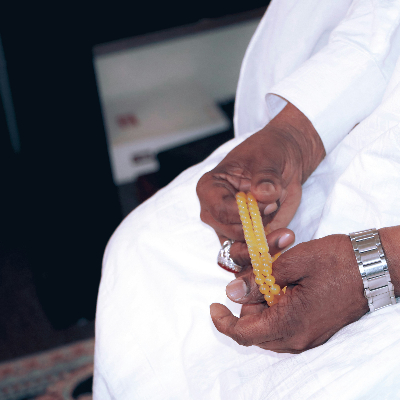Menu
-
-
F.A.Q
- How to identify genuine agarwood chip, natural or cultivated
- How to identify oil injection / absorption fake agarwood beads
- How to know if there are more than one oil in your oil
- How to make your wood bracelet or mala darker
- How to tell if an Agarwood bead sinks WITHOUT sinking it under water?
- How does back flow incense work and how do you burn it?
- Where to start if you don't know what agarwood is ?
- Why are you losing money if you buy seeds and plants?
- Which agarwood incense should I choose?
- Frequently Asked Questions
- Agarwood Related Articles
- Shipping
-
SHOP - Agarwood
-
SHOP - Other Fragrant Wood
-
SHOP - Incense Holder and Burner
-
- FREE Oud Oil guide
- Testimonials
- "Why did you buy this?"
- Contact us
- About Us
- +61430284329
- Login
-
English


I am new to Oud (Agarwood). Where should I start?
July 18, 2020 9 min read
Table of Contents:[hide]
What does Agarwood (Oud) smell like?
Dear friend
You have learnt about Agarwood in the news and heard people talk about it. Probably, you have tried "oud perfume", and you have also tried some "oud incense".
What you have experienced is the blend of multiple ingredients with Agarwood (oud). They make you feel great because they are great.
But
Have you wondered what Agarwood smelled like as an ingredient alone?
And there are many Agarwood products: woodchip, incense, oil, and bead. Which one should I try first?
Well, today I would like to walk you through.
I won't bore you with many definitions but a practical guideline.
So let's get started.
Agarwood: a quick definition
Agarwood is sought-after for its divine fragrance. The source of this fragrance is from the resin and the oil in the infected wood.
Let me explain; this is the Aquilaria Crassna wood. If you heat or burn this wood, you will experience ordinary woodsmoke.
When insects or human attacks the Aquilaria tree, the tree will defence itself by secreting resin. This resin is the defence mechanism of the tree, known as Agarwood. After several years of constant defence from the external and internal attacks, the resin spreads and transforms the wood, from white to dark brown striped wood per below.

And this is Agarwood. I think you can start from here.
The fragrance of Agarwood chips
At room temperature, the scent from the oud wood is faint.

At room temperature, if you pressed your nose against the agarwood chip, you might detect a faint woody scent. It is completely normal if you detect nothing at all.
So how do you increase its fragrance intensity?
There are several ways. Here are some:
Use an electric incense burner.
If you have an electric burner with temperature control, please use it. The temperature is usually set at max 350 degrees Celcius.
I would start with 200 C and slowly max out when the fragrance starts fading.


What if you don't have access to an electric incense burner?
Don't worry; you could use the traditional way of heating resin—the old-school way by using charcoal.
What you need:
-
An open room with proper ventilation
- An agarwood chip: I recommend the length between 1cm to 2 cm. Feel free to break them into small pieces.
- A ceramic container (porcelain, or stone container will work too)
- An incense charcoal
- A lighter
- A metal tweezer
Once you have the six ready. Please
- Use the tweezer to grip the charcoal at one end.
- Use the lighter to lit up the charcoal.
- Carefully place the lit charcoal inside the ceramic container.
- Wait around 2 minutes; the lit charcoal should form a thin layer of ash by this time.
- Place the small agarwood chip on top of the charcoal.


Note: when you light the Miyako charcoal, you will notice a corner of it will be lit and turn into white ash first. The fire will spread, and in 10 minutes, this charcoal brisque will be cover in white ash. There is no need to keep lighting them with your lighter.
Depending on the charcoal use, the temperature will vary. Once the white ash is formed, you can place a woodchip on top of it directly. If you see the bubble appears slowly and steadily, then you have set it right.

If the chip burns quickly, and you would feel the harsh burn notes, it would mean the temperature is too hot. When you experience it, you could use a mica plate to slow down reduce the heat and at the same time, reduce the burn rate.
All you need to do is to place the mica between the charcoal and the wood chip.
The mica plate will prevent the direct contact of the fire to the agarwood chip. Without a mica plate, it still works, but you will experience some burnt notes quickly.

With the mica plate, the heat from the charcoal is "just right". It melts the resin.
Shortly after, you will see a thin layer of smoke. Slowly breathe in, and feel the aroma.
What you can expect to smell: woody, vanillic sweet, spicy notes.
By now, you will understand why it has the name Wood Of God.
What to do when the aroma starts fading?
The Agarwood (oud) aroma comes from the resin.
When the resin content reduces, the intensity of the oud aroma reduces.
If your oud chip is thin (1mm to 2mm), you could try to get the last bit of resin out by placing it directly on top of the charcoal.
or
You could max out your electric incense burner (350 C).
When you do this, in a few minutes, the chip will turn black, completely.
When it is black, you discard the chip.
At this moment, you may not be able to feel the oud aroma because your nose is used to it.
But if you walked out of the room and came back in 3 minutes, you would experience the oud aroma again.
What if you don't like the idea of using either charcoal or incense burner?
Or you feel the 10-minute burning time is too short. Besides, the idea of constant monitoring the temperature, flipping the wood chip to use up the resin seems too much for you.
Agarwood (oud) chips are great, but sometimes, the idea of lighting up a charcoal brisque and the waiting time... seem so tricky. All you want is to smell the smokey oud aroma.
Don't worry; I feel your pain, that is why I would like to introduce you.
Agarwood incense, made from genuine agarwood chips
You still can learn how Agarwood smells through incense without charcoal brisque, mica plate, ash, ceramic container.
If you have access to
- A good ventilation area
- A lighter
- An incense holder
Then you are ready to enjoy this aroma.
Disclaimer, due to many counterfeit Agarwood products in the market, I will use our agarwood incense. So I might be slightly biased.
When you get agarwood incense, first, you open the package, place it close to your nose, and take a sniff.
You will feel the subtle agarwood aroma at room temperature before burning it.
Next, take one incense out.
Place it in an incense holder and light it.
You will see a thin smoke arises from the incense.
You will find it is pleasant, sweet woody, and hints of spiciness. The fragrance is inviting and never overpowering.
Now here is the interesting part.
If you used incense that dipped into fragrance oil, you would feel the constant aroma because most of the time, the fragrance oil is evenly distributed in an incense.
Grandawood Agarwood incense is different. At the start, you feel the aroma, and in minutes later, you feel nothing at all. Then all of a sudden, you discover the pleasant, spiciness, sweetness. You feel like it appears, then it gets quiet. Suddenly, it re-appears, just like playing music with different notes.
Here is the secret that I am going to reveal it to you
1) First, there is no fragrance oil in our incense
If you burn any fragrance oil or essential oil in the naked flame, you might feel bitter in the throat; the aroma is harsh and unpleasant.
Aromatherapists and perfumers are aware of it. They recommend applying topically, diffusing in an ultrasonic diffuser or place these oils in an oil burner. You will not see the recommendation of burning these oil in the naked flames.
So if these oils are part of any incense, then you will feel the burn note when you light an incense because you are burning these oils.
We want you to know what Agarwood smells like, so we only use Agarwood to make our incense. There are only two main ingredients in our incenses.
They are:
- 1) Pulverised agarwood chips blended with
- 2) Natural adhesive - Litsea Glutinosa and post-distilled Agarwood.
Let me explained
Agarwood
Pulverised Agarwood
It is agarwood powder. We grind agarwood chips into powder to make incense or distil oud oil.
Post-distilled wood
It means distilled pulverised Agarwood. After steam or hydro-distilled agarwood oil, the remaining material is called post-distilled Agarwood.
Natural adhesive Litsea Glutinosa
In Vietnamese, we called it as "bột bời lời" or Litsea Glutinosa. It is the paste of the powdered bark.
When mixing with water, this natural adhesive acts as a binder. Besides, it increases the burning time of incense.
Here is the best part: it is odourless.
It means that you will experience only Agarwood aroma without any other ingredients. You will learn how it smells, alone.
Once you get a good idea of how Agarwood smells, you can try different Agarwood incenses with blended ingredients. You will appreciate the skill of artisans who make these incenses.
But if you don't like incense, and you don't like any smoke at all, what else can you use?
There is another very aromatic product: agarwood oil.
Warning Fermented process
To distil the oil, first, we will need to pulverise Agarwood into powder.
We then submerged them underwater in a porcelain container before turning them into the oil. The time of submersion varies. It could be as little as three days and as long as three weeks. Some distillers even soak it for longer.
Why soak?
This process is to "breakdown" the wood, making it softer. Proper soaking increases the oil yield and its aroma.
Fermentation
If you soak something underwater for some time, micro-organism such as bacteria and yeast will develop. It is a fermentation process.
When this process is more than two weeks, the wood starts to decompose. And it has a rotten smell.
When a distiller distils an oil from fermented material, the oil will have fermented smells.
So if you are new to oud, you will find this is difficult to enjoy.
You need to ask the vendor or distiller if the oud you are interested in has this smell. And this is normal because many people love that.
If you grow up near the farming area and you are used to the smell of manure, you might like the fermented scent. So this is a personal taste.
What if I don't like the rotten smell?
Don't worry, and there is plenty of choices, I suggest you ask the vendor for more information.
If the soaking process is within two weeks, I found that the rotten smell is quite "light". You will feel the leathery and peppery instead.
Typically, you will experience the balsamic, vanillic, floral, woody, spicy, herbaceous, camphorous and leathery smell.
Once you experience several types of Agarwood oils, you will know how it smells in perfume.
At Grandawood, you can get some sample to try it. Click here
After you learn the 6 of these oils, you will have a good basic of oud aroma. Pick up some the niche fragrance, and now you will feel more confident to look for the oud notes in it.
Agarwood beads
If the aroma is the most important factor for you, then agarwood beads are NOT the right choice.
Because
At room temperature, the smells of Agarwood are quite faint (except for Agarwood oil).
Occasionally, if you pressed your nose against an agarwood bracelet or a mala, you would feel the woody scent. And other times, you feel nothing at all.
Agarwood Beads are more about the appearance and keeping sake as lucky charms or Fengshui reasons.
Let me explain
Some people told me that when you are heating agarwood chips under charcoal, they saw themselves burning monies.
They like the appearance of the beads but do not like the idea of burning them.
To them, Agarwood like gemstones, it has a special meaning. They feel spiritually connected with their inner world. When they feel worried, they run their fingers and at the same time, they cited the Buddha name for a blessing.
You can also wear it as a Feng Shui bracelet or a good luck charm.

The appearance is quite unique, and if you wear these agarwood beads, you might attract some compliments.
Want to get value for your hard-earned money? Click here for our signature cultivated agarwood beads.
What questions do you have for me?
Email them to info@grandawood.com.au
Leave a comment
Comments will be approved before showing up.
Also in News

What is Tasbih? The Deep Meaning of Subhan Allah and the Role of Prayer Beads
November 09, 2025 4 min read




